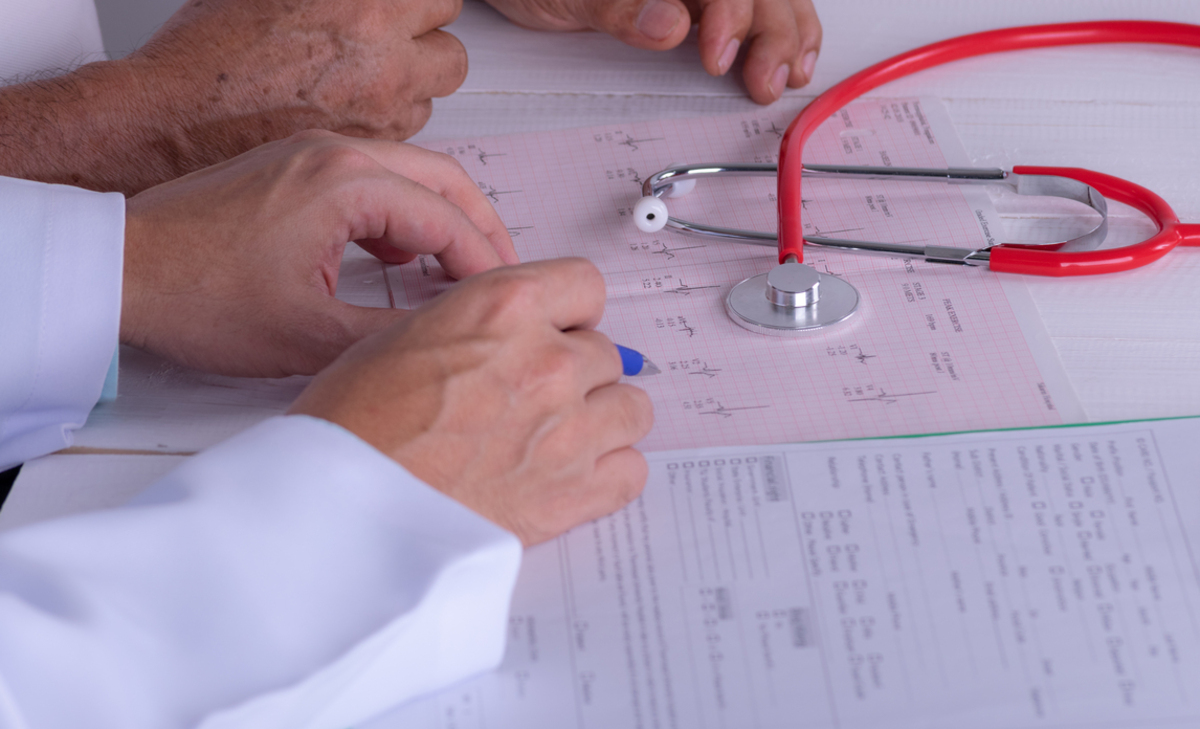When a blood clot is formed as a result of inner lining artery damage, it can completely or fully block an artery that leads to your heart. When your heart’s muscles aren’t receiving enough blood, they are deprived of the oxygen required to survive. Slowly, the cells and tissue begin to die, which can eventually lead to a heart attack.
Heart attacks are survivable, but the danger doesn't end after emergency medical treatment. What should you know about the potential complications of a heart attack?

1. Arrhythmia
While they can be a consequence of a heart attack, arrhythmias can also be caused by damaged muscles. When this happens, the electrical signals that travel inside your body with the purpose of controlling the heart are disrupted. Depending on the type of arrhythmia a person has, symptoms may be quite different but can include:
- Shortness of breath
- Fatigue
- Chest pain
- Heart palpitations (which are sometimes described as heart beating in the throat).
There are certain cases in which arrhythmias can be a danger to someone’s life, particularly when they lead to a complete heart block. If this occurs, it means that your heart's electrical signals aren’t able to travel from one region to another, which makes the heart unable to pump blood normally.
Another potentially life-threatening condition is ventricular arrhythmia. In this case, the heart begins to beat very fast, which eventually leads to spasm and the heart may stop beating. This is called sudden cardiac arrest and has to be treated as a medical emergency, with the primary goal of getting the heart to beat once again.
Arrhythmias can have major life consequences and pose a threat about 24 to 48 hours after someone has suffered a heart attack. With the invention of portable defibrillators, the survival rates of arrhythmia patients have increased, as people can now offer medical assistance to those who go into sudden cardiac arrest until specialized medical services arrive.
People who suffer from mild arrhythmias will usually have to take medication such as beta blockers. In other cases, doctors trying to treat patients with bradycardias might suggest inserting a pacemaker (an electrical device implanted into a person’s chest, to help regulate heartbeats).
2. Cardiogenic shock
The symptoms of cardiogenic shock include:
- Difficulty in breathing
- Mental confusion
- Pale skin
- Rapid breathing
- Little to no urinating
- Cold hands and feet.
People who go into cardiogenic shock are usually administered a type of medication called a vasopressor. This helps contract the blood vessels to increase a person’s blood pressure and improve circulation.
Stabilizing symptoms is the first step. In some cases, surgery is required to improve the heat’s function. A very common intervention in case of cardiogenic shock is the coronary artery bypass graft. This type of open-heart surgery implies using a healthy vessel to redirect blood away from the blockage site inside the coronary artery.
3. Heart failure
Heart failures are generally found in the left ventricle. Their symptoms may include shortness of breath, arms, and legs swelling, and also fatigue. Heart failure is normally treated with medication, but when the damage is far too severe, doctors may choose to perform surgery.
4. Heart rupture
This can happen when the heart has been severely damaged due to a heart attack, typically about one to five days after the heart attack. Because the symptoms of cardiogenic shock are similar to those of heart rupture, people might sometimes mistake one for the other.
The treatment plan requires open-heart surgery in almost every scenario. In about half of the cases, people who suffer heart rupture die within the following five days.
Conclusion
Heart attacks occur when the blood supply to the heart is interrupted. This happens due to a blood clot that’s blocking the coronary arteries, literally standing in the way of blood flow. The heart muscle that is connected to the blood artery will slowly experience cell death, and once this happens, you are at risk of a full-blown heart attack.
After a heart attack, doctors will need to assess the damage done and determine which is the right treatment path for you to follow. In some cases, complications may arise due to heart damage, such as the four different scenarios described above. While some complications can be fixed with medical treatment, others will require invasive interventions.
- Photo courtesy of SteadyHealth


Your thoughts on this